Go Beyond the Gag Reel: Season Three Special Features
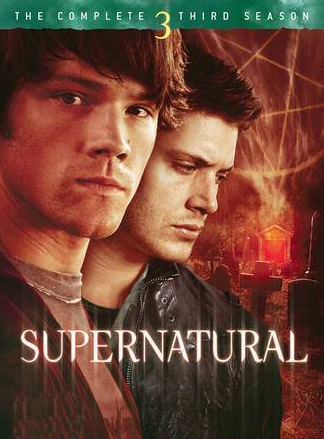 Much like Supernatural’s season three itself, the special features are a bit short thanks to that Writer’s Strike. There’s a lack of deleted scenes and commentary—and there’s no special Blu Ray exclusive features. What’s there, though, are illuminating and fascinating looks behind the scenes. We’re allowed to glimpse further into various episodes, to see more confessional footage from the Ghostfacers, and two longer features first concerning all the visual effects—a combination of make up, costume, and digital effects—and a peek inside the inner workings of the third character of the series: Baby, the Impala.
Much like Supernatural’s season three itself, the special features are a bit short thanks to that Writer’s Strike. There’s a lack of deleted scenes and commentary—and there’s no special Blu Ray exclusive features. What’s there, though, are illuminating and fascinating looks behind the scenes. We’re allowed to glimpse further into various episodes, to see more confessional footage from the Ghostfacers, and two longer features first concerning all the visual effects—a combination of make up, costume, and digital effects—and a peek inside the inner workings of the third character of the series: Baby, the Impala.
So, let’s dig into the special features of season three, shall we?
The first extras I sat down to watch were the “Closer Looks” peppered throughout the season. In truth, these are very much like the featurettes found on season one and two’s Devil Road Maps. Each one tackles a particular episode with the writer, director, or Eric Kripke discussing an element of the episode or the episode as a whole. The episodes that got this “Closer Look” were “The Magnificent Seven,” “The Kids Are Alright,” “Bad Day at Black Rock,” “Red Sky at Morning,” “A Very Supernatural Christmas,” “Dream a Little Dream of Me,” and “Jus In Bello.”
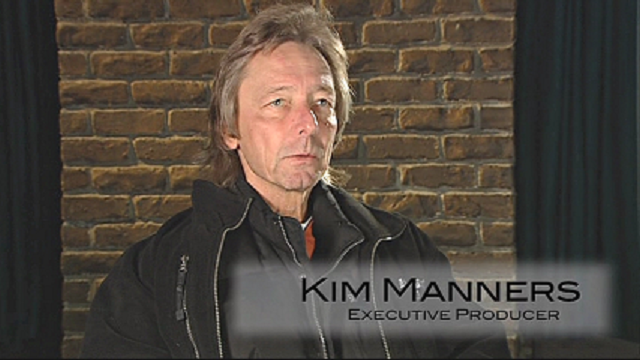
All screencaps credited to @Valerie613
The first featurette is bittersweet. Kim Manners takes us inside his process as he directed “The Magnificent Seven” and provides some deeper insights into how they shot key scenes and introduced the character of Ruby.
Manners explained that he approached the episode like a western. Given the episode’s name, it fits with the overall concept. When it came time to barrel into the diner with the car and the holy water, Manners wanted them to go for the faces. We’ve seen demons have holy water tossed at their clothing, but this was one of the first times we see it fully hit demons in the face and he wanted to make that look awesome. It would give us a look at how effective holy water is on demons. In some ways, it also adds another layer of reality since the holy water the hunters splash on demons won’t always end up on clothes, too.
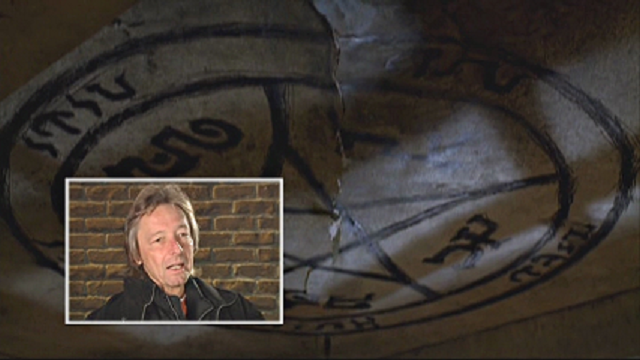
He gave some insider information on how Pride broke the Devil’s Trap in the ceiling. It was rigged with hydraulics above, and it took them two takes to get it the way they wanted it. He felt that the first take didn’t break it in half correctly. Instead, it only “smooshed” it down. So, they had to do it again. Between those two takes, it took 45 minutes to reset the ceiling. I was really impressed with how dedicated Manners was to getting that shot just right. We don’t really see it for more than a matter of seconds really, and they wanted that moment to look real and frightening. It also keeps us in the moment, too, seeing it crack the way Manners intended.
For Ruby’s knife fight introduction, he said that they filmed that at 120 frames per second so they could speed it up or slow it down as they saw fit to highlight the action sequences that take place in that scene. It allowed them to really set Ruby up as a mysterious fighter that made us want to see more. Manners really liked how that turned out—and how it highlighted Katie Cassidy especially.
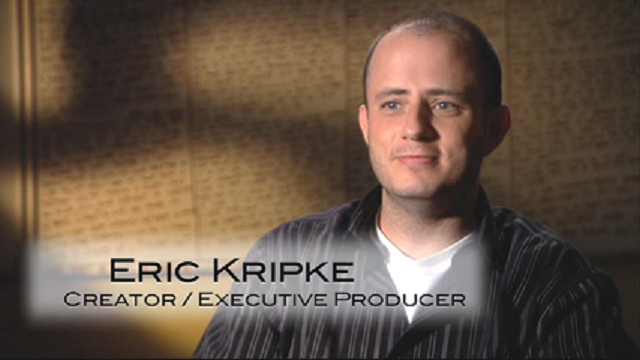
The second “Closer Look” focused on “The Kids Are Alright” with Eric Kripke. He discussed two key elements that shaped that episode: the moment the mother drowns her changeling daughter and the mirroring Dean and Ben do of one another.
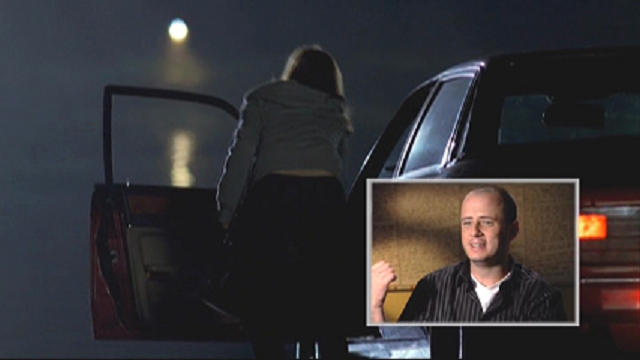
Kripke stated that several episodes of Supernatural originated from a single scene idea that they wanted to do. That scene has to be in the episode—the rest is kinda shaped around that. The scene in this episode was the moment we see the mother drown the changeling daughter only to find her alive back home. He was surprised that the network allowed that to be aired. It’s a dark and graphic moment—and he went onto say it’s “The CW with the Pussycat Dolls and America’s Next Top Model—and a mom drowning her kid and that’s why we love being Supernatural!”
This scene was really great for him because it captured all of the horror of such an innocent moment being twisted by something so dark. The little girl is dripping water all over the floor and asking for ice cream—all after she was supposedly killed. Kripke admitted to giggling when he watched it. It was exactly what he wanted.

When it came to Dean and Ben, Kripke admitted that the mirroring they do was not originally in the script. That was on the direction of the episode director, Phil Sgricca. He determined that Dean and Ben should look down at the same time when Lisa scolds them or both should eat their cake the same way and leer at the mom and daughter passing by together. It was to capture that they’re “of the same mind” and draw on a connection between the two characters. It’s fascinating how a directorial cue could help shape the relationships we see later on in Dean, Lisa, and Ben!
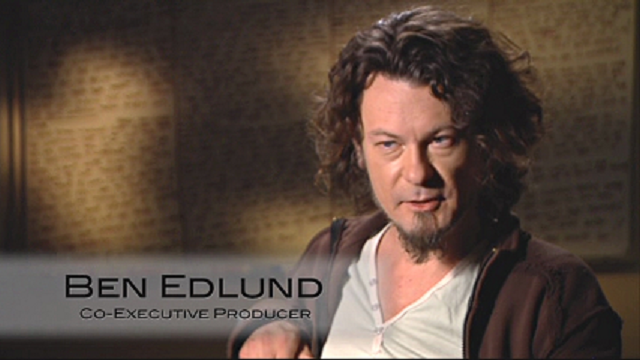
Ben Edlund discussed “Bad Day at Black Rock.” He talked about the introduction of Bela, the concept of the rabbits foot, and John’s storage locker in respects to the over all story. When it came to Bela, he didn’t shy away from discussing how difficult it is to introduce a female character into the Supernatural universe. He admitted that there’s a resistance to it from the fanbase that is devoted to the brotherly relationship. He also talked about how most people the brothers encounter don’t know what they do or don’t believe them. Bela, on the other hand, had her own cards to play and a few tricks up her sleeve that allowed her to shake up the universe a little.

When it comes to the rabbits foot, Edlund admitted that this episode was largely a screwball comedy at its heart. Yet, he also wanted an emotional underpinning and so we see the introduction of John’s storage locker. He discussed the brothers making a connection to their now absent father. John had died, he had gone to hell, and now they’re not really sure where he’s at so seeing what he kept from their childhood or what he housed in this locker really let them connect on another new level. While he enjoyed the lightness of the episode, Edlund really loved seeing the emotional layers emerge from that within this episode.
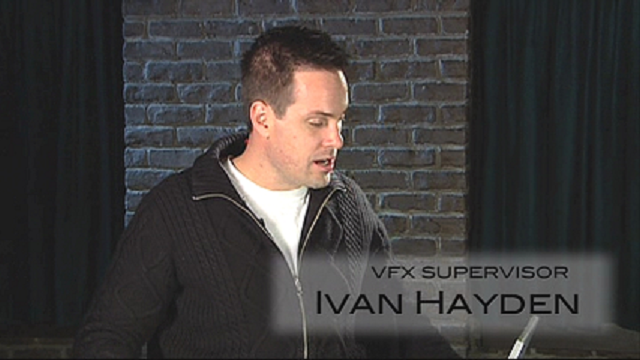
The “Closer Look” at “Red Sky at Morning” discussed all the special effects we see in the episode. Ivan Hayden tells us about how they presented the ship, the ghost in the shower, and finally the scene when the brotherly ghosts confront one another. He said that they wanted a different shot in the teaser originally, but to match the reaction presented by the actress, they scaled it down to make it seem like an illusion—did she see it or not type thing.

When it came to the shower scene, he described how they put one plate of the scene over the top of the other so they could then insert the ghost and the water dripping from its fingers. To do that, they had to add three seconds into the scene and then erase the woman’s elbow to reveal the spectral image. That plate was taken from another angle and then fused together to make that final scene that we actually see.
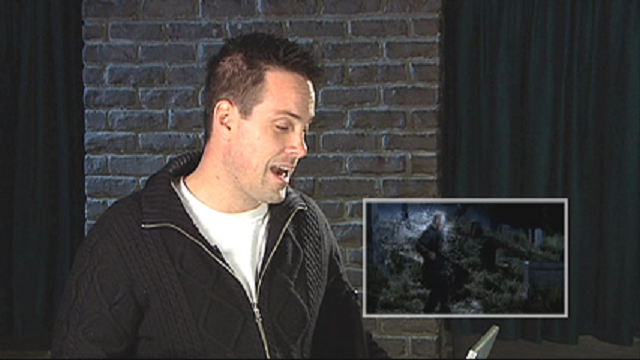
The biggest shot—and his baby—was the shot with the two ghostly brothers confronting one another. Hayden said that they wanted it to look like one ghost was diving into the other. Not only did he want this effect, he wanted it to be slow motion to really capture the moment. They shot that particular scene at 1000 frames per second so they could amplify the water visually and make it look the way Hayden wanted it. At the end, we see the slow motion stop and real time take over and both spirits become water and disappear. It was fascinating to hear Hayden talk about how they went about putting that together in the computer to make what we see that much more dramatic.

The next “Closer Look” delved into the disturbing side of “A Very Supernatural Christmas.” Kripke discusses the genesis of the episode and how during research into various lores he came across the Anti-Claus concept. He found that to be extremely interesting and that they had to do a Supernatural holiday episode in season three. Kripke said that there were three scenes that had to be included no matter what: the teaser with Santa being hauled up the chimney, the dad being beaten, kidnapped, and taken in front of the seven year old boy, and Sam and Dean killing someone with a Christmas tree.
Kripke admitted that he gets calls from his extended family asking what’s wrong with him periodically. After this episode, he received a few of these calls. He said that he wanted this to be the most un-holiday holiday episode on TV possibly ever. Rather than being sentimental or cute or trapped in the frills of the Christmas season, he wanted to take all of that and turn it dark and disturbing and put it into the context of the Supernatural universe. He found it gleeful to have killed Santa in the first five minutes—stating, “Thanks for watching, kiddies!”
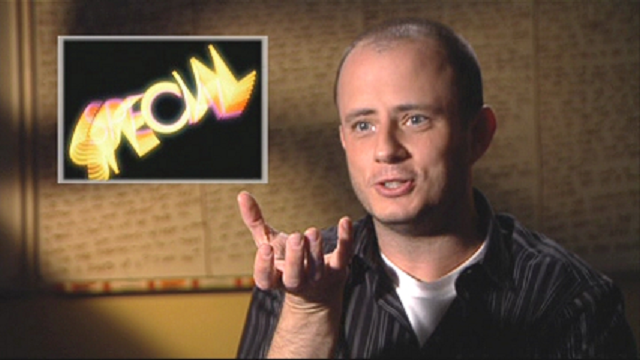
That being said, Kripke also said that he liked the way the episode opened with the Special logo and music. That was an old CBS standard from the 1980s, and he said that it was a bit harder to find that snippet. Once they did, he finds that he really enjoys that aspect the most. The episode opens the way any special would have then—reminding him of his childhood.
The “Closer Look” at “Dream a Little Dream of Me” tackled a few concepts. First, it addressed the nature of the television business and the way a story makes it to screen. Kripke discussed the original concept for the episode, painting it as a homage to 80s horror—in particular the Friday the 13th franchise. In his original script, Dean was going to wake up with a woman running by in horror only to turn and face Jason. Kripke said they were three days away from shooting when he was told that they couldn’t use Jason or anything really resembling the Friday the 13th franchise. The studio did not have the rights to that particular character or franchise, so they nixed it. It left them scrambling to come up with a new angle and a new concept—all while making it in time for the first day of shooting.

To think fast, Kripke decided to open it up to the notion that dreams are strange things. He settled on the concept that Sam would have a sex dream about Bela. He said it wasn’t so much that Sam loved her or really thought much about her, but that under the “nice guy” Sam would be this “horn dog” and that Bela just happened to be the female character that passed through the story to set that particular moment up. To contrast that, they decided to bring back Lisa and Ben in a very normal and suburban dream concept for Dean—that he wanted this family and this sense of normal. Kripke thought it was a heartbreaking moment that really built character growth more than the Jason concept would have originally.
To dig even deeper into the episode, Kripke talked about the shaping of the sequence that takes place between Dean and Dream Dean. That wasn’t the original concept, either. He had wanted to bring back Jeffrey Dean Morgan as John, and have Dean confront his father about things. John was supposed to berate and attack and be angry with Dean in that scene. It was supposed to be a worst nightmare moment for Dean with his father telling him that he was a failure. Kripke was excited for that, but it fell through because Morgan was tied up in the filming of The Watchman.
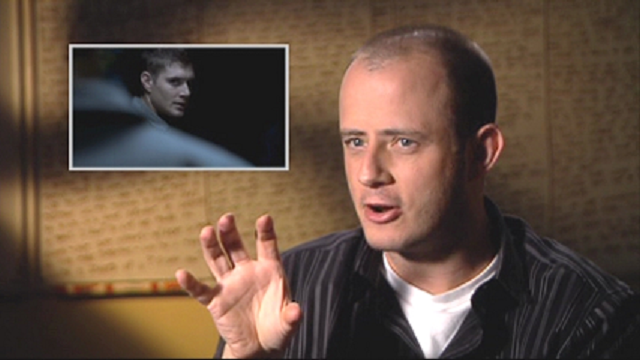
That meant he had to change the script again and so he settled on the concept in Superman 3 of Dean facing himself. The conversation that the two characters share points towards that original idea of John yelling at Dean, however. Dream Dean accuses Dean of not having anything that isn’t their dad’s. He also felt this was a turning point for Dean in terms of emotional and character growth. He thought that Dean should arrive at a greater self respect for himself by the season end, and that this moment started that for the character. Essentially, we see that come true when Dean shoots the Dream Dean—only to have that moment end with Dream Dean opening his demonic eyes, of course.
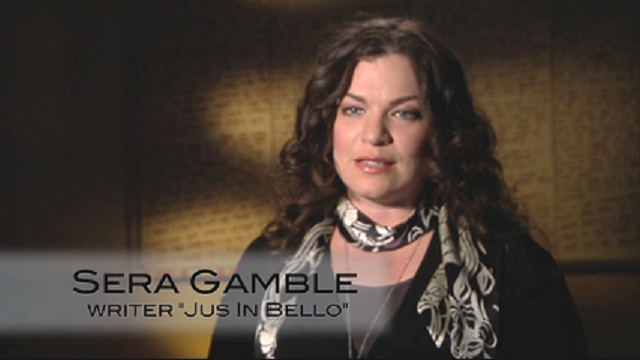
Sera Gamble closes out the “Closer Looks” with a discussion on “Jus In Bello.” She talks about the set up for the resolution to the Hendricksen storyline and how they wanted to make sure this threat would be removed while giving the character a proper send off. To do that, she’d have to develop his character a bit deeper and make him a more rounded figure than he’s been in previous encounters. So, she had him have his boss give him a bit of crap to add to the crap he was already facing in the field and in turn unleash that onto the nearest person afterwards—in this case the Sheriff.
She also knew that they had to populate the station with people that would be strong enough to carry the story and make us care, so she came up with the idea of Nancy being a very devout person that was also more or less a civilian. She wasn’t a hunter and she wasn’t actually in law enforcement. She was clerical help that got caught in the crossfire. Gamble thought that would really help capture the story of the siege the Winchesters would face from the demons.

The idea that the new demon would be Lilith originated in conversations between Gamble and Kripke. She felt that the new demonic leader should be female. Up until then, they had tacked on a name and really hadn’t thought about who or what this demon would really be. By the end of their conversation, they had settled on it being Lilith—but woman or child? Gamble felt there would be nothing creepier than a little girl going from innocent and sweet to terrifying all in a matter of moments. It was fascinating to see that the concept of this formidable demonic foe—one that threatened for two seasons nearly—would come from just a simple conversation.
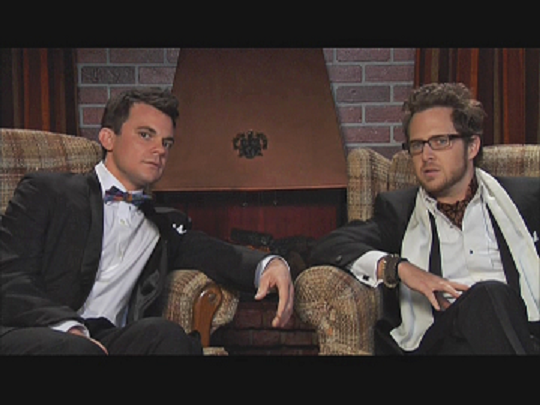
The next feature focused on the Ghostfacers. It was more confessional videos that blended with what we already see in the episode and other scenes that we didn’t. To fit more in line with the concept of this episode—that of a parody of the reality television craze during the Writer’s Strike—we see a greater in depth look at each of the characters. Ed, Harry, Spruce, Corbett, and Maggie all each get to share more about themselves and how they came into the group to hunt down ghosts and make themselves famous doing it.
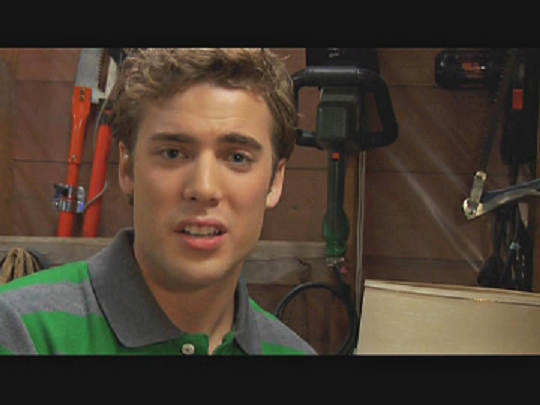
It fleshes out some of the things we didn’t see prior to the hunt at the Morton House, too. We see Corbett explain that he found the group by seeing a flyer and how he wasn’t really sure if he wanted to believe in ghosts or that they scared him before joining—but now he’s there and he’s the cook. Maggie shares more insights into Ed and Harry and how they settled on founding the Ghostfacers. Spruce talks for much longer in the golf cart cage about his connections to the group and how he got involved with them.

The whole extra is truly an extension of the episode that captures all its flavor. There’s wackiness as we watch Spruce chant a goodbye to Corbett for instance. In many ways, we can almost see this extra as an deeper introduction to each character from the episode and a lampooing of the reality television format on all levels.
The next special feature dug into the specifics of special effects, make up effects, and visual effects. Each one is its own distinct element that shapes the final product—but what we really learn in this feature is how they all work in concert to make that product. It truly becomes a team effort in the end.
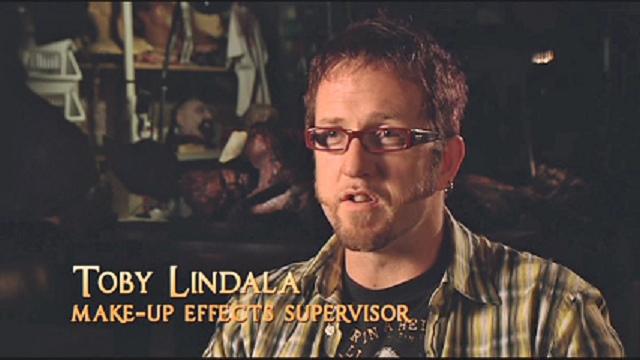
The make up team sets out to work on things that look organic—such as skin or a corpse. Anytime we see someone with their throat cut out or someone stitching up a wound, we’re looking at the make up effects work. The special effects comprises of everything atmospheric—like book pages fluttering or flying free. They tackle the overall look and feel of a scene. They also tackle the messy business of blood. They use a lot of blood packs to give us the reality of someone bleeding—either from a gun shot wound or a stabbing wound or other means. Visual effects encompasses all the computer elements that we see—from a face morphing into another or the demon smoke swirling or something happening in slow motion.
Each of these elements have to work alone and then together to capture the story. The idea is to be incognito and fitting in with the story in such a way that we don’t really notice them as elements of the show. Instead, it draws us deeper into the story and makes us believe all the more that what we’re seeing is really happening. In many scenes, all three will be present on some level to do that. We’ll have blood packs from special effects and skin from make up effects and the glow or smoke or other element of a creature’s transformation from visual effects all at once to keep the action looking that much more real.
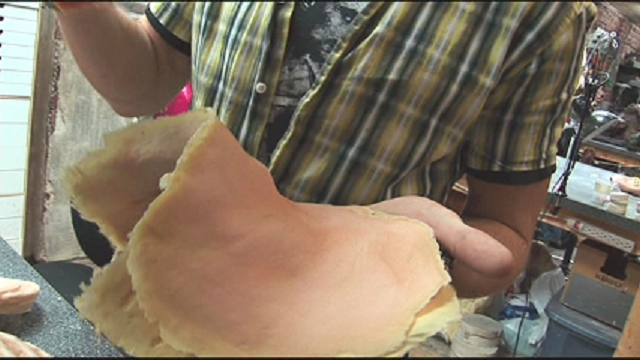
There were a couple really cool aspects delved into deeper in this feature. We saw the dummy used in “The Kids Are Alright” when the dad is killed on the table saw. It was molded to be put onto that saw by the make up team while the special effects rigged it with the blood packs and visual effects made it look like it was really the actor. We see another combination of this in “Fresh Blood.” Gordon’s death was rather simple for them to approach, but they had to make it horrific to pull it off. The make up effects team set out to tackle the gore with the wire digging into the make up skin while special effects jumped in with the blood element and visual effects gave us that end game of Gordon’s severed head lying on the floor twitching. That last element was all done on the computer, making it look like his mouth was still moving and his eyes were blinking.

Visual effects also gave us the many deaths of Dean. Since they couldn’t really hit Jensen Ackles with a car or drop a desk on his head, we see the visual effects team work diligently on the look of Dean in these scenes, giving him the same look and feel of the real Jensen Ackles all while being able to twist and contort Dean into his various death moments. It was really fascinating to see how they built that from one layer to the next giving us that final product in the end.
Most of the work that they do is determined in meetings. They discuss how and what they’ll tackle in each episode. They will put together art mock ups to build from and then start to make the reality of the final product from there. The way each department works on their own things to make them the best they can and then together as a whole team really made this feature all the more special. It allowed us an inside and in depth look at just how much time, effort, and dedication is done by everyone involved in these crucial departments.
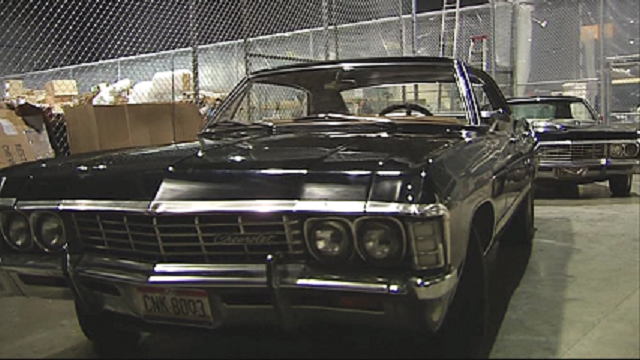
The last feature is for motor heads and fellow lovers of the Impala. We get a closer look at the actual car herself and her various forms—from one with her hood up to show off her engine to the stock car that comes apart for interior filming.
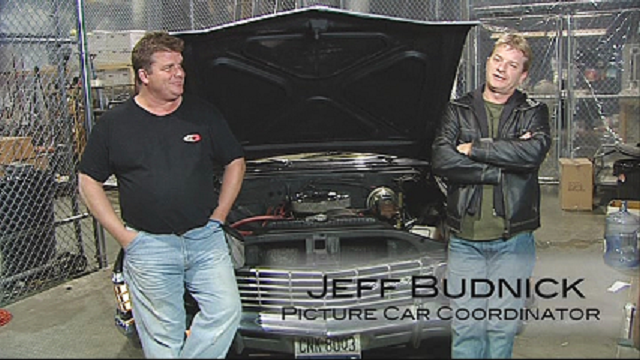
Each car that they have—excluding the stock car and the one hit by the semi at the end of season one—are actual functioning vehicles. They are all worked on by an on set mechanic that keeps the Impala running at all times. The ones that no longer run are used for parts at this point. These vehicles are older and therefore much harder to upkeep due to the lack of parts.
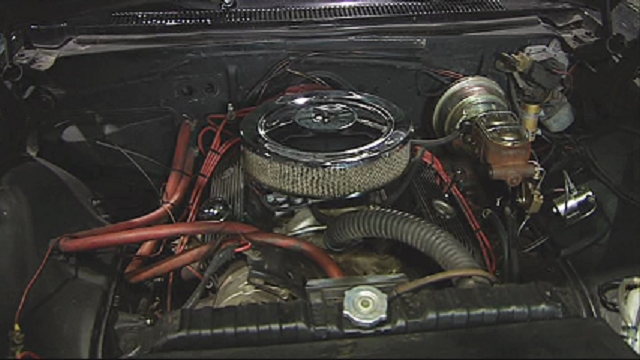
The most impressive feat that the Impala did in season three was jumping a 52 feet gap. On screen, this particular jump looks like a small bump or dip that the nose goes into and rises out of, but in reality the actual car jumped that long gap. They admitted that the engine was destroyed in the process, which means at some point that particular car had to either be turned into a parts car or rebuilt.
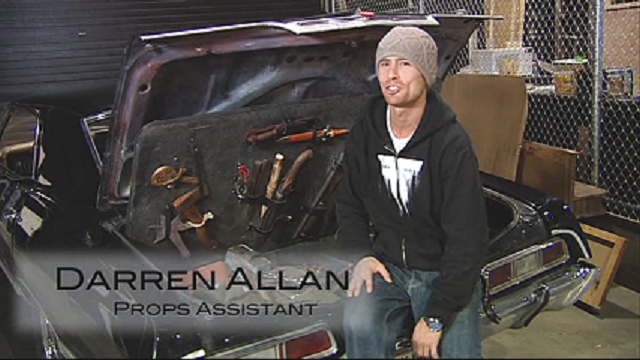
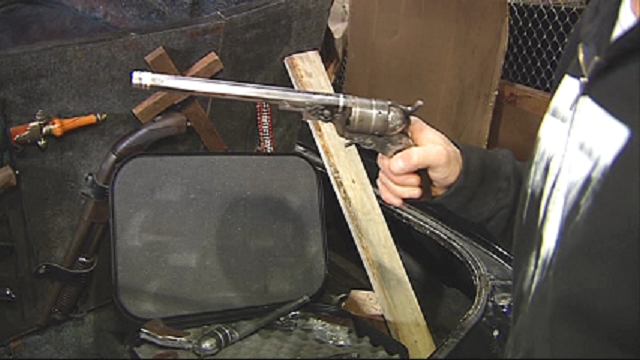
We also got to see a look into the weapons stash with the props assistant, Darren Allan. He showed the opened case inside the trunk with the various weapons from Sam and Dean’s shot guns to the salt rounds to the holy water flasks. He also showed the Colt—both as a metal gun and a rubber mock up. The Colt that we see was made specifically for the show. It really let us take a little deeper peek into the various weapons we see the boys use week to week and where each one might be stashed in their cache of weapons.
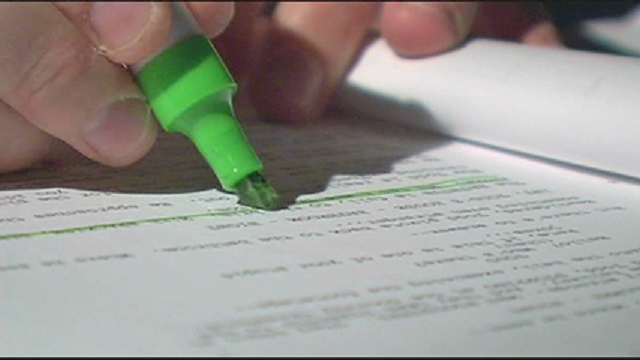
There might not have been that many season three features, but the ones we did get covered a lot of fascinating ground. We saw more into the nature of television making—be it a difficulty acquiring rights to a particular property or the availability of an actor changing the end story. We also got to look much deeper into the nature of effects that make Supernatural look and feel the way it does every week. It really gave us a chance to peel even more of the curtain away and see the inner workings of a television production. In many ways, this allows us to appreciate even more how special Supernatural truly is—and how the story goes from being black and white text on a page to that visual episode we see each week.
In the next installment, we’ll explore all of season four’s special features.

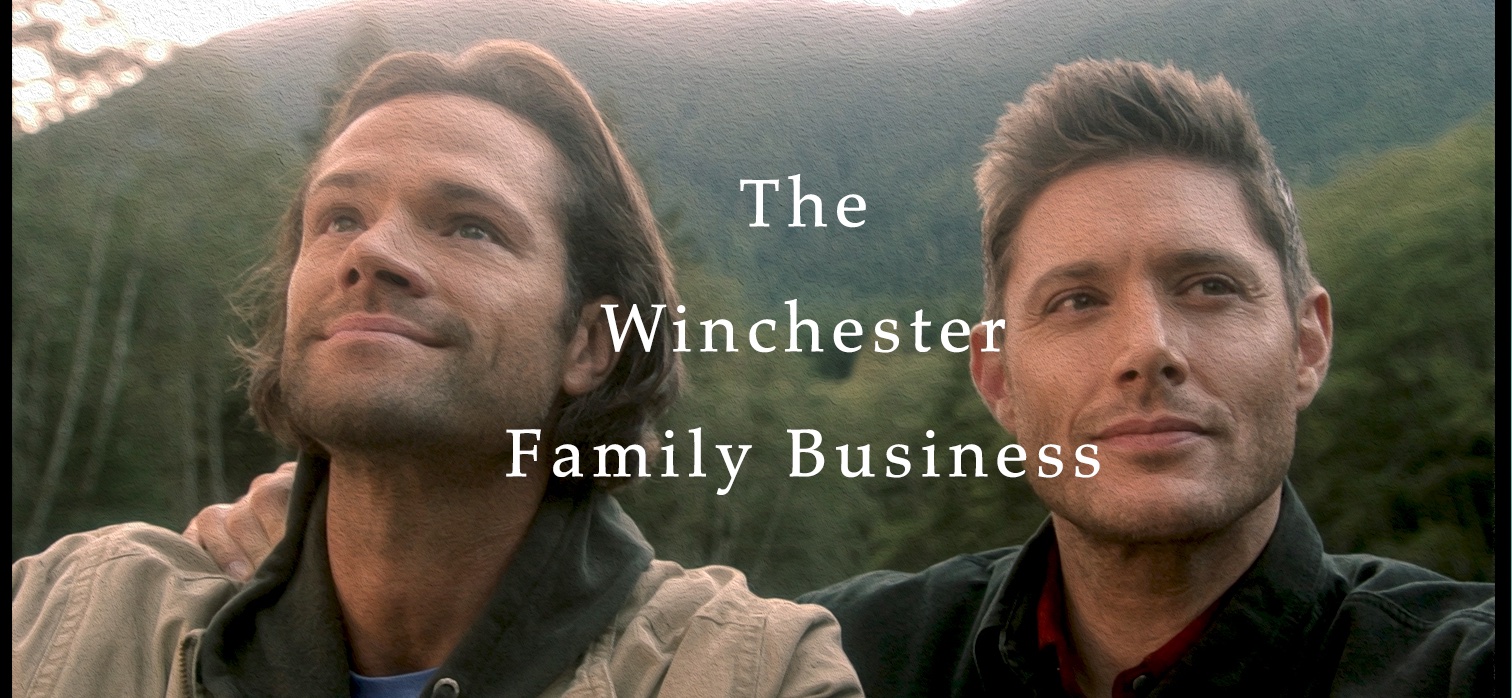



I read this the first day it was posted but then Comicon got in the way. 😉 I enjoyed this article very much. I did watch all the BTS extras so it was fun to read your take. Thank you it was a great read as always.
Thanks for the comment.
I’m so glad you came back to my little BTS article after the Comic Con excitement. I didn’t pay much attention to the event except for the fantastic Nerd HQ panels.
I’m really impressed with all the extras and it makes me want to learn so much more. I’d love to actually be that fly on the wall on the show or any show to see how all these things really come together. This seems to be as close as we’ll ever get! I”m looking forward to digging into the season four ones soon.
Thanks again!
Season three may have been a shortened one, but the extras are really interesting. We got a glimpse behind the curtain and that is always fascinating. Yet again a great read. Thanks Far Away Eyes. 🙂
Thanks for the comment.
I’m glad you liked the look behind all the looks behind the curtain in these extras. I was really thrilled with what we got and what I learned. It made me want to see MORE. I really am fascinated by all of the special effects—on all levels. I hope you’ll enjoy the look at the season four extras, too.
Thanks again.
Thank you for another great and insightful review farawayeyes. I think this season BTS was my favorite just because of all the detail we got in every aspect of making our little fabulous show. I also love the Kim Manner spot and knowing that we lost him later on after that just makes that even more amazing and special. Now those of us who own a copy of the DVD or BluRay have a way of remembering just what a unique and talented person he was and loved by all that worked with him.
Thanks for the comment.
I’m glad you liked my look at season three extras. I’m hoping to dig into season four’s extras very soon.
I’m just amazed by how much work, time, dedication, and sheer effort goes into this show (or any show for that matter) every week. The more I learn exploring these extras, the more I want to get involved doing some of it!
I also love seeing Kim talk about the show on these extras. I may never have had a chance to meet him personally, but Kim is the kind of talent that touches us with his work in so many ways and I think we’ll always feel that about what he did with Supernatural and all the shows that he worked on in his career. I’m so glad we get to see these extras and hear his thoughts about the work he did. It somehow makes it all the more special for me.
Thanks again.